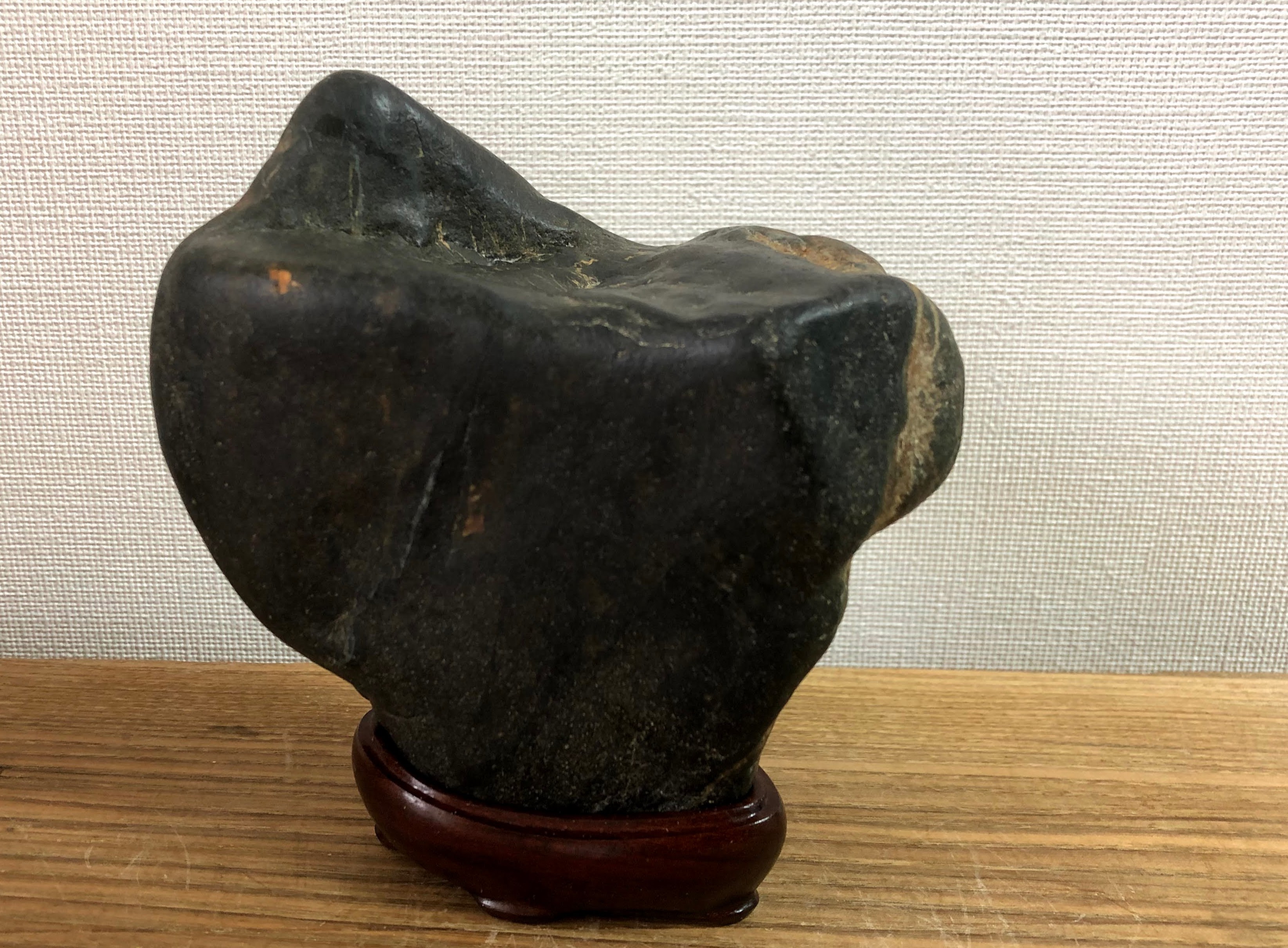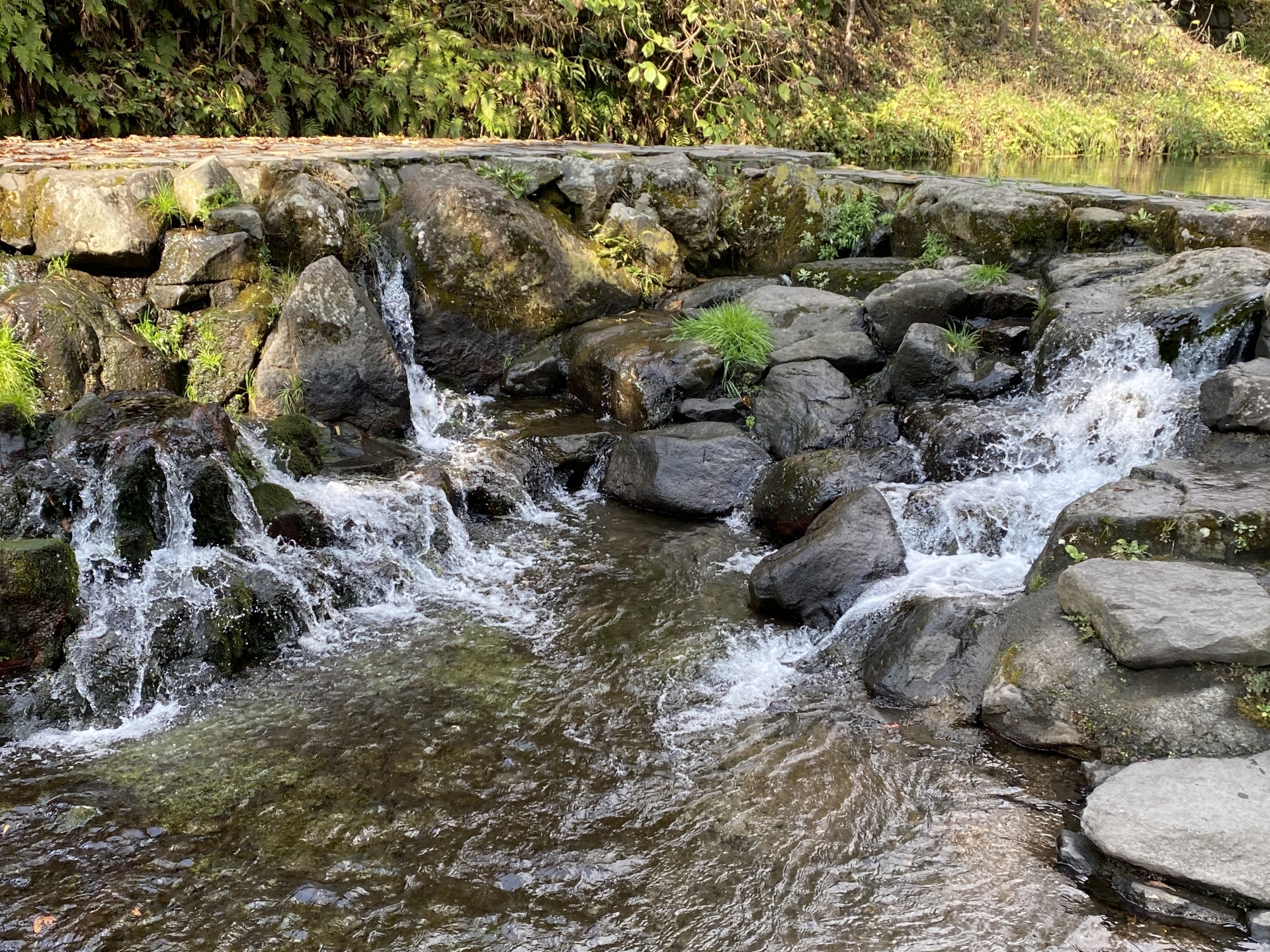What is Suiseki, 水石とは
The meaning of Suiseki
Suiseki is Japanese traditional culture to appreciate stones. It is considered to be continued from millions of years in Japan.
Suiseki is Japanese word and Suiseki is written as "水石" in Kanji(Chinese characters). "水" means Water and "石" is Stone.
So, 水石' literally means Water Stone.
Actually, the origin of the name is also unclear as the same as its history.
Some say that it is because Suiseki resembles a landscape(including mountain and river(water)).
Others say that it is because pouring water on Suiseki to see more patterns clearly or to enjoy wetted dark color.
Or, it may be because almost Suiseki stones are come from rivers.
I like pouring water story since it means any stones can be Suiseki although others narrow down the range.
I means, there are Suiseki stones which do not resemble a landscape and Suiseki stones from mountain or sea.
Either way, there is no one clear answer to describe what Suiseki is.
Ruther, I believe that Suiseki is more fuzzy.
Actually, I believe that Suiseki is something to feel.
So, I am still trying to capture Suiseki and this site is for that. I would like to study Suiseki from several angles and leave it behind.
And I hope many people understand Suiseki in the future.
Conditions of Suiseki
Suiseki can be classified as follows:
- 【Classified by History】
- ・Stones having historical meanings
- 【Classified by Shape】
- ・Suggestive of Landscape
- ・Abstractive stones
- ・Sugata-ishi
- 【Classified by Color】
- ・Colorful stones
- 【Classified by Pattern】
- ・Pattern stones
Of course, there are other classifications, such as stone-field, surface texture, and other characteristics.
On the other hand, there are other conditions for Suiseki.
One is that Suiseki should be appreciated in the room.
So, the size of stones should be one foot or two feet. But from my opinion, it is based on Japanese old house, especially in consideration of Tokonoma which is a recessed space in a Japanese style reception room, in which items for artistic appreciation are displayed.
However, the recent houses in Japan do not have Tokonoma in many cases. So, I think that the size of stones for Suiseki should be smaller in these days.
Or, of course, if there is enough room for Suiseki, the size of stones may be gibber. But, from Japanese people’s sense, more than 2 feet stones are considered as garden rock, not Suiseki.
The other condition is artless beauty. Since appreciation of Suiseki includes feeling the mystery of nature, basically reshape is not allowed.
Suiseki makes a distinction from artifact.
The final condition is whether or not you can feel something (it is beauty in most cases) from the stone itself.
That is the most important condition.
Suiseki is distinct from stones you can find anywhere by this perspective. Even if there is some stone which is not classified by category of Suiseki, if you feel something from the stone, it can be considered as Suiseki.






